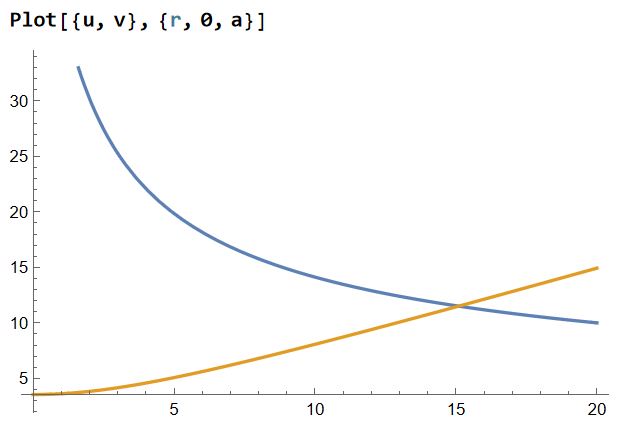The first step is to find the partial derivative wrt r of the exterior gravitational potential of the oblate, derived by Gauss and Dirichlet.
The next step is to substitute the value of z (The vertical coordinate) as a function of r (the horizontal coordinate).
$$z(r) = \sqrt{(a^2 - a^2 e^2)*(1 - r^2/a^2)}$$
which is readily obtained from the definition of an ellipse. Here a is the usual semi-major axis of the ellipse and e is the eccentricity. r is the horizontal distance parallel to the x axis, from the central rotation axis to the surface point,
A similar procedure to find the partial derivative wrt to z is used to find the vertical component Fz of the force:
The exact result for the horizontal component $F_r$ of the surface gravitational force can be seen in this Mathematica worksheet , but I recommend the simplified equations found by @Ghoster in his answer.
In short $F_z \propto M \sqrt{a^2-r^2}$ and $F_r \propto M r$.
While it may be initially surprising to see that the horizontal component (blue curve below) increases with distance from the centre, it becomes obvious this must be the case, since centrifugal force (CF) also increases linearly with increasing distance from the centre as per $CF \propto \omega^2 r$ and a fluid oblate rotating body is the result of the equilibrium of those forces.
The resultant total force Ft is easily found using Pythogorus:
$Ft = \sqrt{Fr^2 +Fz^2}$
Below is a plot of Fr, Fz, Ft, Fc and z, from r=0 to r=a:.
This plot is colour coded the same as the force vectors in the diagram above it. The magenta curve (z) is the elliptical profile of the oblate at e = 0.99. The gold curve (Fz) is the vertical component of the surface force and drops off to zero going towards the equator. The blue curve is the horizontal component (Fr) that points at the vertical z axis. This component steadily increases gong from he centre to the equator. The green curve (Ft) is the resultant for Fr and Fz and only drops off by about 20% going from the centre out to the equator. The red curve (Fc) is the component of the total surface force that points directly at the centre and after an initial drop off starts to increase linearly going outwards.
If we naively assumed the central force was proportional to $GMm/R^2$ (where R = $\sqrt{r^2+z^2}$ ), then the required balancing centrifugal force would require a velocity of $u = \sqrt{\frac{G M m}{R}}$, while using the central pointing force Fc derived above, the required velocity to produce the required balancing centrifugal force is given by $v = \sqrt{ Fc \ \ R}$ and these two velocity curve profiles are plotted below for comparison:
The classic assumption (blue) for stable orbital velocities, drops off with increasing distance from the centre, while the exact solution presented here, shows the required balancing velocities increase with increasing distance from the centre. Note that this fact cannot eliminate the requirement for invoking dark matter to account for the flat orbital velocity curves that are seen in galaxies, because the flat curves extend far beyond the visible radius of the galaxy (sometimes by orders of magnitude) and these equation only apply to the visible radius. Beyond the visible radius these equations would expect the rotation velocities to drop off with increasing distance from the visible matter of the galaxy if there is no dark matter.
A typical elliptical galaxy with a central bulge could be modelled by adding the above equations for the flattened disk, to the usual $F = GMm/r^2$ to allow for the extra mass of the bulge at the centre modelled as a sphere. .



